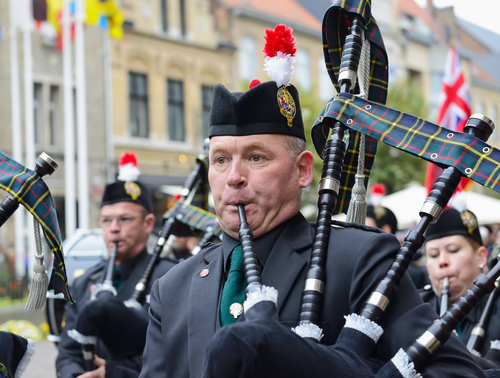On November 11th, many people across Europe and other parts of the world pause to remember the end of World War I. This significant date is known as Armistice Day. It marks the moment the fighting stopped on the Western Front in 1918, bringing an end to four years of conflict.
For many, especially those with loved ones living abroad, understanding cultural observances like Armistice Day is important. It offers insight into the history and values of the places they now call home. This guide will explain what Armistice Day is, how it is observed in different European countries, and what it represents today.
The History of Armistice Day
World War I was one of the deadliest conflicts in human history, lasting from 1914 to 1918. The fighting finally ceased when an armistice—an agreement to stop fighting—was signed between the Allies and Germany.
The signing took place in a railway carriage in the Forest of Compiègne, France. The armistice went into effect at 11 a.m. on the 11th day of the 11th month of 1918. This is why the moment is often referred to as “the eleventh hour of the eleventh day of the eleventh month.”
One year later, on November 11, 1919, King George V of the United Kingdom asked the public to observe a two-minute silence. This was to honor the soldiers who had died in the war. This tradition of remembrance quickly spread to other countries.
How Armistice Day Is Observed in Europe
While the date is the same, the name and traditions associated with November 11th can vary across Europe. Here’s a look at how some countries commemorate this day.
United Kingdom
In the U.K., the main day of observance is Remembrance Sunday, which falls on the second Sunday of November. However, a two-minute silence is also held at 11 a.m. on November 11th itself.
The red poppy is a powerful symbol of remembrance in the U.K. and other Commonwealth nations. People wear paper poppies on their clothing to honor the armed forces. This symbol was inspired by the poem “In Flanders Fields,” which describes poppies growing on the battlefields of World War I.
France
In France, November 11th is a public holiday known as “L’Armistice de la Première Guerre Mondiale.” The day is marked with military parades, wreath-laying ceremonies, and special church services.
The main ceremony takes place at the Arc de Triomphe in Paris. The President of France lays a wreath at the Tomb of the Unknown Soldier, a memorial dedicated to an unidentified French soldier who died in the war. This tomb represents all the soldiers who lost their lives.
Belgium
As a country that experienced intense fighting during World War I, Belgium holds November 11th in high regard. It is a national holiday, and ceremonies are held across the country.
In the city of Ypres, a special Last Post ceremony takes place every evening at the Menin Gate Memorial. This memorial is dedicated to the British and Commonwealth soldiers who were killed in the Ypres Salient and whose graves are unknown. On Armistice Day, the ceremony is particularly poignant and draws large crowds.
Poland
For Poland, November 11th has a dual meaning. Not only does it mark the end of World War I, but it is also celebrated as National Independence Day (Narodowe Święto Niepodległości).
After being partitioned and occupied by neighboring powers for 123 years, Poland regained its independence in 1918. The date coincides with the Armistice, making it a day of both solemn remembrance and national pride. Celebrations include military parades, concerts, and speeches in Warsaw and other major cities.
The Symbolism of the Poppy
The red poppy is one of the most recognizable symbols of Armistice Day, particularly in Commonwealth countries. Its association with remembrance comes from the fact that poppies were among the first flowers to bloom on the devastated battlefields of Flanders in Belgium.
The Canadian physician and poet Lieutenant-Colonel John McCrae immortalized this image in his poem, “In Flanders Fields.” Today, people wear artificial poppies to show respect for the fallen and to raise money for veterans and their families.
Armistice Day vs. Veterans Day
In the United States, November 11th is known as Veterans Day. While it originated as Armistice Day to honor the end of World War I, its focus has since broadened.
In 1954, the U.S. Congress changed the name to Veterans Day to honor American veterans of all wars. While both days fall on the same date and share a common origin, Veterans Day celebrates all who have served in the U.S. Armed Forces, living or dead. Armistice Day in Europe remains focused on remembering those who died in World War I and subsequent conflicts.
Understanding Global Traditions
Armistice Day is a time for reflection and gratitude. It’s a day to remember the sacrifices made for peace and to honor the memory of those who lost their lives in conflict.
For people living and working abroad, learning about these cultural traditions can help build a deeper connection with their new communities. It fosters understanding and shows respect for the history that has shaped the world we live in today.
